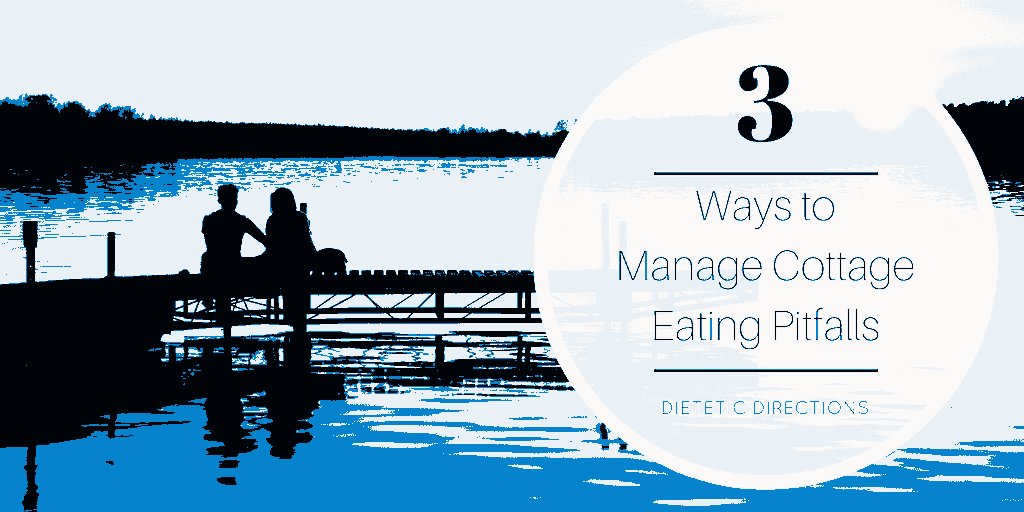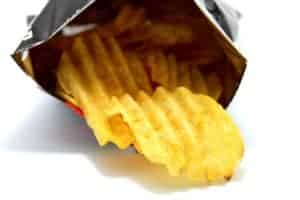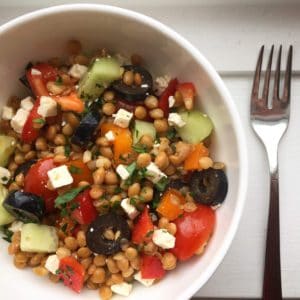
3 Ways to Manage Cottage Eating Pitfalls
Summer is a time to kick back, enjoy the sunshine and time spent in tranquil destinations. Whether you are staying at a cottage or camping, eating well on these weekends comes with its own inevitable challenges. Raise your hand if, on a cottage weekend, you have felt unwell after eating copious amounts of junk food? Or if you found yourself permanently grazing (and/or drinking) throughout the day? Or perhaps you witnessed yourself forgoing your usual structure and balance at meals? I know I can say yes to all of these things.
In today’s blog, we’ll explore 3 ways to manage cottage-eating pitfalls so that you can relax without feeling like you’re losing track of your regular eating patterns.
Cottage Pitfall #1: The “Junk Food Trap”
The word cottage is often synonymous with junk foods – and lots of them! It would be surprising if there have been many cottage/camping weekends without chips, sweets, Danishes, pops, etc. After all, isn’t that what makes these weekends extra enjoyable? Now, I’m not saying to avoid junk food at the cottage, because that would be crazy, even for this dietitian! However, there are effective solutions to tackle the inevitable cottage challenges.
First, let’s define the “junk food trap”.
“Junk Food Trap”: When there are readily available (and visible) bags of junk foods like Cheetos’s, sour patch kids, marshmallows and chocolate. It may include junk foods that come out during our travel time and/or foods that come out when playing games or socializing.
Now, you’ll know you’re in the “junk food trap” when you:
- Can’t restrain yourself from taking another handful of chips or sweets.
- You have no idea how much you just ate! This is also referred to as mindless eating (topic that is well explored by researcher Brian Wansink in Mindless Eating).
The “Junk Food Trap” Solutions:
-
Pack the “good stuff” for the road trip:
When planning snacks for cottage/camping car trips, be sure to pack snacks that are “healthy” and satisfying. For many, the driving portion of the cottage weekend is when food intake can be more easily controlled by putting junk food away into bins or inaccessible bags. Instead, get yourself a water bottle or tea and pack some super convenient and enticing ‘good-for-you’ munchies. A client of mine started packing little baggies with snap peas, carrots and cherry tomatoes and was surprised to find her kids mindlessly munching on these veggies to pass the time.
For satisfying snack ideas, click here to download my 16 balanced snacks. Many of these ideas would be ideal for the car ride.
-
The 3:1 Ratio:
Now for those beach times where you have your snacks out for mindless munching. Try applying the 3:1 ratio; this means you have 3 healthy foods for every 1 “less healthy” option. By offering healthier options in higher quantity and variety, you are increasing the likelihood of these foods being consumed. For example, you could offer: watermelon wedges, whole grain crackers and chopped veggies with hummus and a small bowl of chips.
-
Size Matters:
Be sure to use smaller bowls for the foods you want to limit and larger bowls for items you want people to consume more of. This means that the Costco potato chip bag will have you eating more — especially if you’re grabbing handfuls directly from this bag!
This was studied by researcher and author, Brian Wansink, where he found that fresh popcorn in large tubs resulted in people eating 45% more than those given fresh popcorn in medium-sized containers. People even ate 34% more stale popcorn when the serving size was larger! Note taken; if you want people to eat more, make the serving bigger and they naturally (unknowingly) will.
DYK: People eat 45% more popcorn from a large tub versus medium-sized tub? Click To Tweet-
Water Offered:
When having snacks, be sure to have a large pitcher of cold water and enough glasses to encourage everyone to pour themselves one. When we hydrate well, we tend to be less tempted to continue munching. Try making the pitcher extra enticing by including things like: fresh lemon wedges, cucumber or mint.
-
Out of Sight:
Now this solution calls for the junk food to be removed from clear view and placed into a less convenient location where you have to consciously go and get it. Some of my clients have moved snacks into the cottage basements and others have put these tempting treats on top shelves that require a stool to reach. This is a barrier that decreases the likelihood of consumption. If you want it, you can get it, but it’s just less of a reminder/cue to eat.
Cottage Challenge #2: The “All Day Graze”
Something about the cottage air just makes people hungrier, or so I hear. I challenge this statement and encourage you to re-visit your meal structure and timing to see if you are in fact “hungrier” or simply eating more due to a lack of structure and an environment with readily available snacks? Either way, the “all day graze” tends to leave people feeling dazed and in a food coma.
The “All Day Graze” Solutions:
-
Enjoy 3 meals-a-day:
Even when on vacation, it’s still important to have three meals a day. This helps to regulate your food intake and prevents over-eating. Skipping lunch is a common cottage-eating habit and leads to eating more later in the day. As a rule of thumb, I recommend clients aim to have meals separated by 4-6 hours and wait for at least a couple hours after a meal before having a snack.
Even on vacation, still keep to three meals daily! Click To Tweet-
Plan balanced meals ahead of time:
A balanced meal includes carbohydrate for energy (read why carbs are good and necessary in my post entitled, “In Defence of Carbs: Stop the Hating”, a portion of protein and lots of veggies. Plan your meals ahead or request guests to plan a meal or two and pick up the ingredients. This helps everyone and keeps the meal structure.
Here are a few examples of my fave cottage meals:
- Fajitas with grilled chicken or shrimp, BBQ veggies, cheese and salsa with side salad
- BBQ pizzas with favourite toppings and fresh veggies on the side
- Macaroni and cheese with hotdogs or veggie dogs 🙂
- Bean salad, Greek Lentil salad or cold pasta salad
- Veggie or chicken burgers with whole grain bun and lots of veggies as toppings
-
Better Grazing:
As previously mentioned, if possible, try to space eating times at least two to three hours apart. Similarly, be sure to not bump a meal and turn it into a snacking affair. If you must keep foods available for grazing purposes, try making enticing veggie platters, homemade dips with crackers, popsicles or fresh popcorn. These options are lighter and will not be as likely to hinder appetite for your structured meals.
Cottage Challenge #3: The “All or Nothing” Mindset
Do you ever hear yourself rationalizing eating poorly, “the heck with it, I’ve already eaten X, might as well just continue!” In a previous blog, I wrote about how to overcome “All or Nothing” mental sabotage. “All or nothing thinking” also known as “black and white thinking” is the most common type of thought distortion or irrational thinking. This refers to a tendency to think in extremes. By this logic, you are either “on your diet” or “off your diet”. Ditching this mindset (that often comes out on cottage weekends) will leave you feeling happier and in the end eating healthier too!
The “All or Noting” Mindset Solutions:
-
Give yourself permission to enjoy “guilt- free” eating.
I think this should be anytime really! Working with clients on developing a positive relationship with food starts with releasing the judgment and vilification of certain foods which actually ends up making us want more of them!
-
Practice Mindful Eating:
When you are enjoying food, be sure to slow down and savour. Take pleasure in the tastes and smells. Here are 8 steps to Mindful Eating by Harvard Health.
When enjoying decedent food, be sure to slow down & savour. Take pleasure! Click To Tweet-
Enjoy the “Non-Food” Things:
When we are so consumed with eating (and drinking) our cottage experience can easily be over-shadowed. Try including more activities that can be enjoyed without food. This might include taking a book and reading on the dock, playing a game of scrabble or cards, going for a canoe ride or simply telling campfire stories. These are memories worth making and savouring too!
Bottom Line:
When it comes to eating well when at the cottage, we do not have to aim for perfection. Nothing is wrong with indulging from time to time. Instead, it’s a matter of increased awareness of the 3 common pitfalls and coming up with realistic solutions AHEAD of time to make it easier to eat with purpose and thought.
Wishing you all a happy (and delicious) summer!











